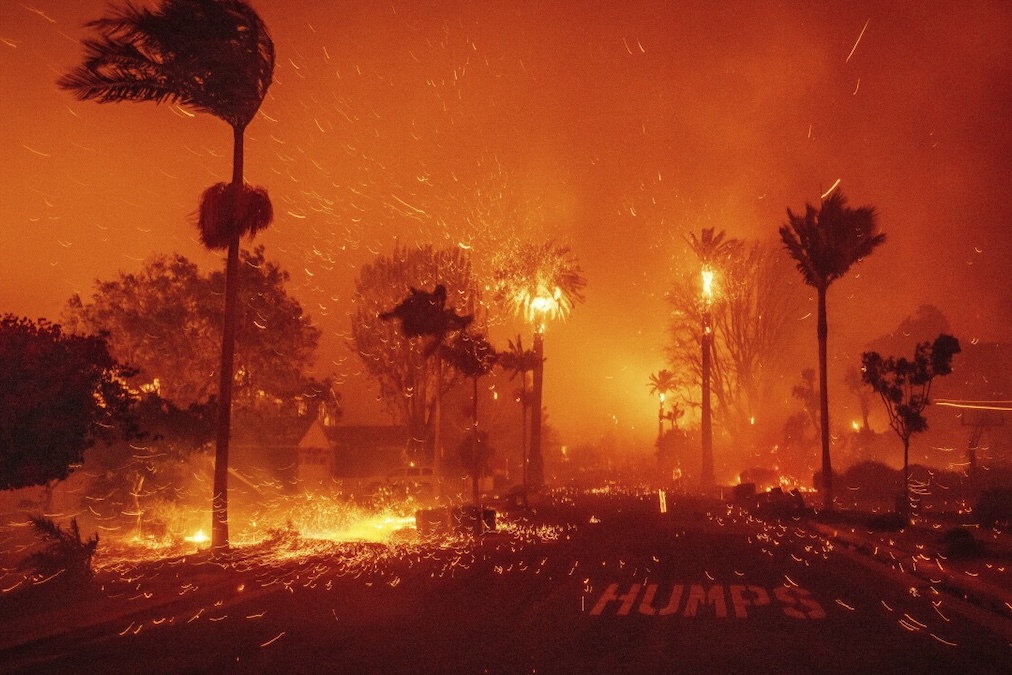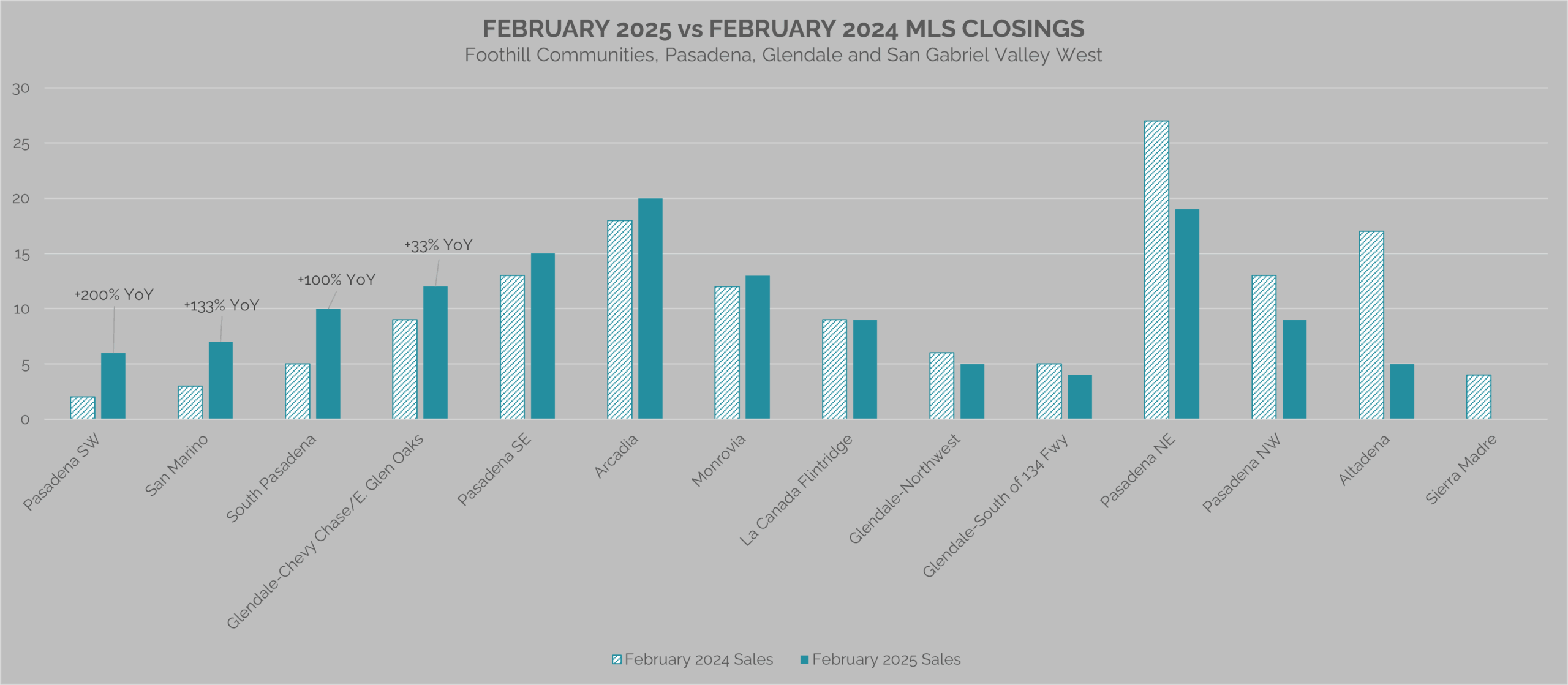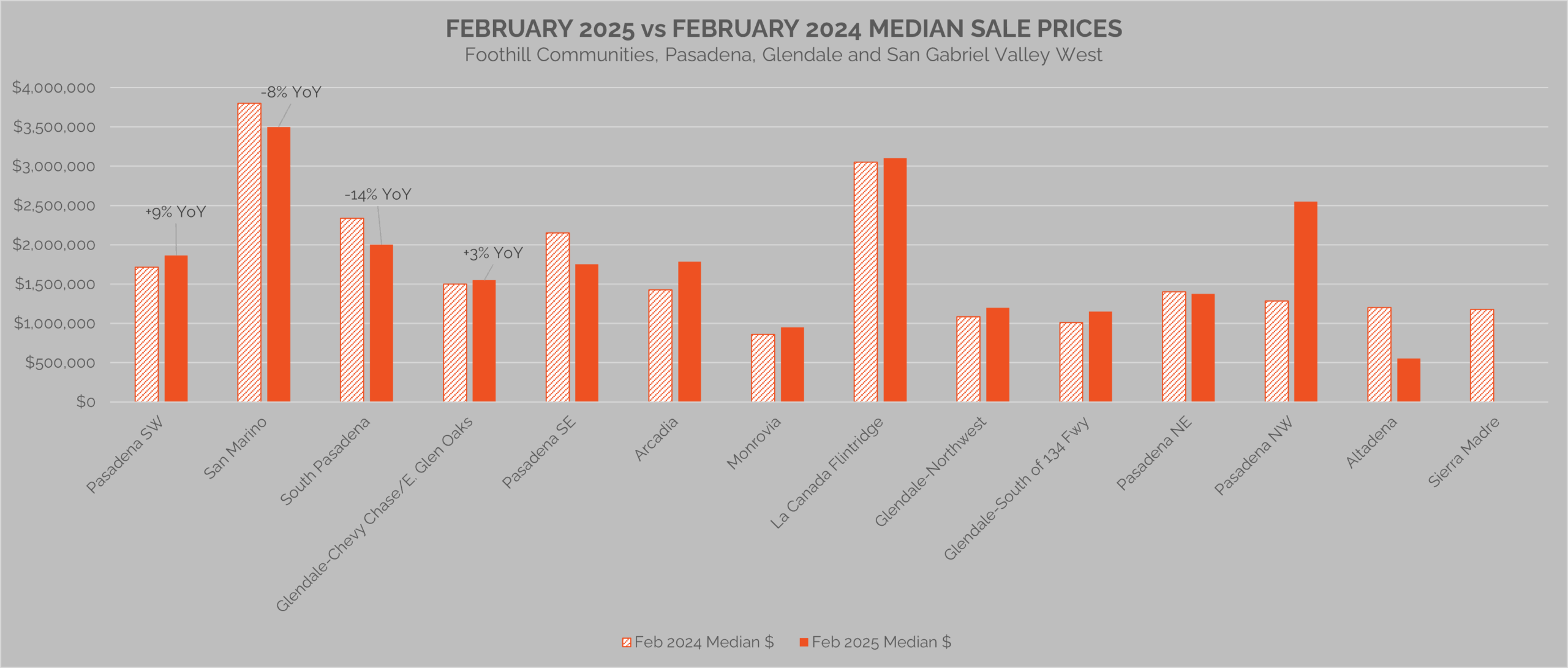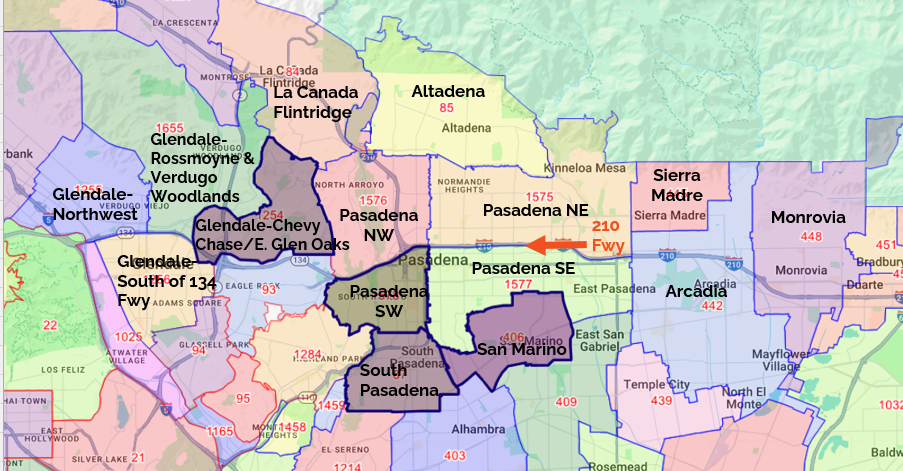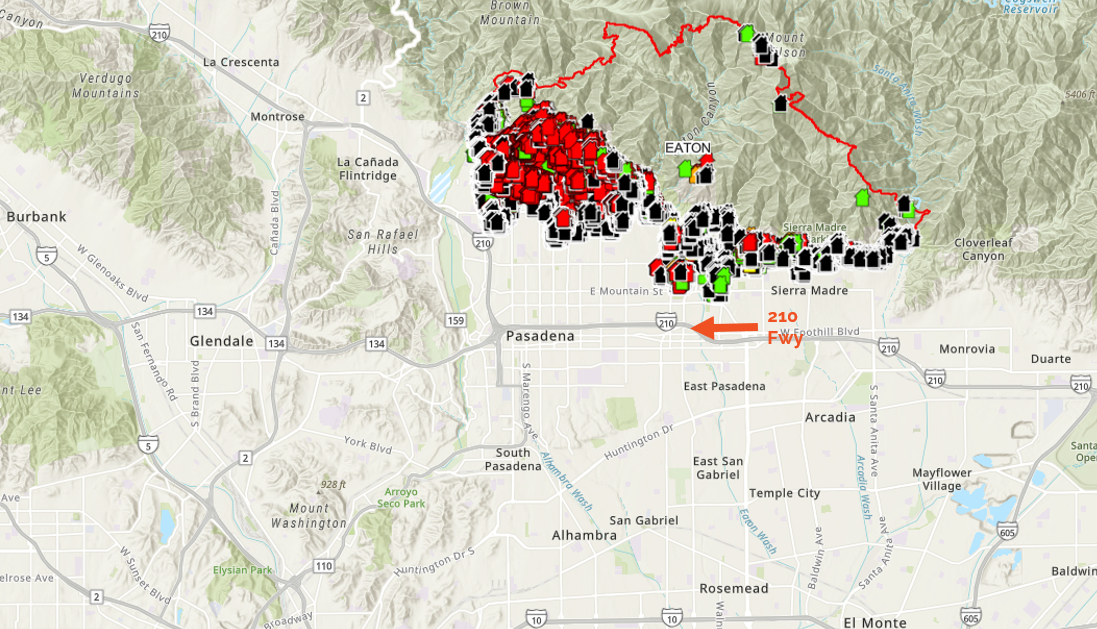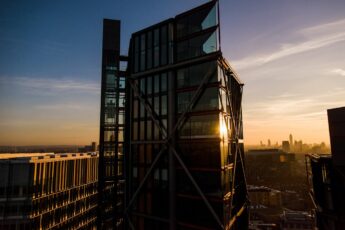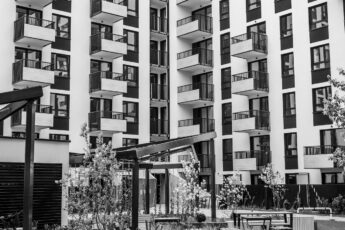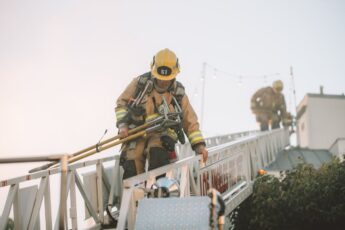HOW POST-FIRE HOUSING TRENDS DIVERGED BETWEEN THE EATON AND PALISADES FIRE ZONES.
MAY 2025
The Eaton Fire, which tore through parts of Altadena and Pasadena in early January 2025, is a sobering reminder of Southern California’s ongoing vulnerability to wildfires. Occurring the same week as the Palisades Fire in West Los Angeles, the Eaton Fire is among the most destructive in California history. According to preliminary estimates, over 9,000 structures were lost, including homes, businesses, schools, and community spaces. The death toll has reached 18.
Last month, we reported on the Palisades Fire’s near-term impact on housing markets in adjacent neighborhoods. Early indicators — particularly February 2025 year-over-year sales and median price data — suggested a sharp uptick in activity in nearby and/or lifestyle-adjacent communities such as Brentwood, Santa Monica, and Manhattan Beach. Buyers sought continuity in school zones, neighborhood dynamics, and access to familiar amenities, contributing to an unusually strong post-fire rebound.
This month, we turn our attention to the areas adjacent to the Eaton Fire. The charts below compare February 2025 and February 2024 single-family home closings and median sale prices, using neighborhood boundaries defined by the Los Angeles MLS. The methodology focuses on February sales in order to try and isolate the initial impact of the fires and ensuing displacement on the local housing market.
As shown in the first chart, the communities of Pasadena SW, San Marino, South Pasadena and Glendale-Chevy Chase saw the largest year-over-year increase in February home sales. These neighborhoods, while in the same general vicinity, are not immediately adjacent to where the Eaton Fire burned. All four are south and west of the 210 freeway which encloses much of the burn area. Furthermore, while these areas saw sharp increases in sales, price trends were more mixed. In Pasadena SW and Glendale-Chevy Chase, the median sale price for homes sold in February 2025 compared to February 2024 increased 9% and 3% respectively, whereas the other top neighborhoods recorded decreases.
Meanwhile, key neighborhoods directly adjacent to where the fire burned—La Canada Flintridge, Pasadena NW, Pasadena NE, and Sierra Madre recorded either stagnant or substantial decreases in home sales.
Neighborhoods with the Highest YoY Increase in February Sales (denoted by dark outlines)
Eaton Fire Burn and Damage Inspection Map
Whereas the Palisades Fire resulted in an immediate and pronounced post-fire sales surge in nearby neighborhoods such as Brentwood and Santa Monica, areas directly adjacent to the Eaton Fire faced weakened or stalled demand. This divergence suggests that market responses to wildfires are not universal. Whereas the Palisades Fire displaced high-income buyers into neighboring luxury markets, fueling an immediate rebound, the Eaton Fire prompted more cautious behavior in foothill communities already sensitive to fire risk. Key factors shaping these differences include:
- Economic profile and buyer mobility
- Perceived vs. actual proximity to danger
- Media coverage and psychological framing
It’s important to note that demand has not disappeared entirely. In some cases, there has been opportunistic interest in fire-adjacent properties — and pressure placed on displaced homeowners. However, unlike in West LA, the immediate aftermath of the Eaton Fire has not generated a surge in competitive buying activity. Instead, these communities appear to be entering a more measured, complex recovery phase.
Rebuilding in the aftermath of the Palisades and Eaton Fires will take years and effort from the community at large. If you’re interested in donating to organizations that have helped those affected, please consider the list below:
• Los Angeles Fire Department Foundation: provides vital equipment and funds to help the LAFD
• Pasadena Humane Society: provides shelter, dedicated care & new beginnings for vulnerable animals displaced by the fires
• World Central Kitchen: provided meals to affected families and first responders in need
All information is from sources deemed reliable but no guarantee is made as to its accuracy. All material presented herein is intended for informational purposes only and is subject to human errors, omissions, changes or withdrawals without notice.
